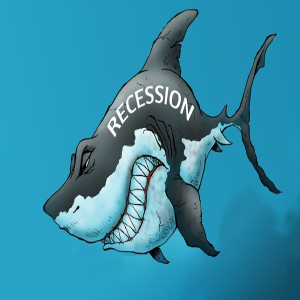How to save for retirement when you're in your 50s
Published in Home and Consumer News
Once you reach your 50s, it is crunch time for saving for retirement. If you set a retirement savings target but have been neglecting it, you need to dust it off for a careful review. (Working with a financial adviser can help get you back on track.)
Once you’ve reacquainted yourself with the financial destination you want to reach, take these steps in your remaining pre-retirement years to make sure you get there.
1. Set realistic goals
First item for consideration: your savings and investments thus far. Hopefully, you’ve been stashing away money consistently, making maximum contributions to 401(k) plans and IRAs, as well as other accounts.
How much is enough? That depends on your lifestyle and expenses, potential medical bills and the kind of support you’ll have from, say, a pension plan and Social Security.
As you review your savings goals, be careful not to set the bar too low. Use a retirement calculator to get a better idea of how much you might need to save.
If you need some assistance, call in the experts. Consider meeting with a fee-only financial adviser who can make sure you’re on the right track.
2. Tackle debt
One thing that can keep you from saving for retirement is lingering debt. By the time you’re 50 years old, one big debt hurdle you may have left to clear is your mortgage.
Once upon a time, mortgage-burning parties were a fun way to celebrate the achievement of owning your home free and clear. But that rite of passage is becoming less common. In fact, 44% of homeowners between the ages of 60 and 70 have a mortgage when they retire, according to a study by American Financing.
Without a mortgage to pay for, you could focus on saving or investing in the stock market. Paying off your home will likely take time, but in the long run, it’s worth it.
3. Take advantage of catch-up contributions
If you didn’t make saving for retirement a priority early in life, it’s not too late to catch up. At age 50, you can start making extra contributions to your tax-sheltered retirement accounts (called catch-up contributions).
Younger workers can only contribute $23,000 to their 401(k)s and $7,000 to their IRAs in 2024. But Americans aged 50 and up can contribute up to $30,500 in a 401(k) and up to $8,000 in an IRA.
An emergency situation may force you to dip into your retirement savings (especially if you haven’t set aside enough money for emergencies). Just keep in mind that tapping your 401(k) or IRA before age 59 1/2 will cost you. There are exceptions, but in most cases you’ll pay a 10% penalty for an early withdrawal.
4. Create a health savings account
Another important step to take is preparing to cover unexpected medical costs. Large medical bills can quickly deplete a lifetime of savings.
A couple in their mid-60s will need $330,000 to cover health care costs in retirement, according to a 2024 Fidelity Investments estimate. Then there’s the stratospheric cost of extended care at nursing homes. A report from Genworth Financial says the median annual cost of a semi-private room in a nursing home was $104,028 in 2023. With that in mind, retirement planning must include some consideration of future medical costs.
One option is long-term care insurance, which pays for extended medical care, including such things as nursing and assisted living. If you have a high deductible health plan (HDHP), you should also consider opening a health savings account (HSA). This will reduce your taxable income. Your savings, which can be invested, will grow tax-free. Once you turn 65 years old, you can make withdrawals without paying any penalties or taxes (savings are only taxed if you use the money to pay for anything besides qualified medical expenses).
Before choosing an account, you will want to shop around to find the best features for you, like low fees or low minimum balance requirements.
5. Make the most of Social Security
The earliest you can start taking Social Security is technically age 62. But at 50, it doesn’t hurt to start thinking about your plan for collecting benefits. You can use Bankrate’s Social Security calculator to estimate your benefits.
Experts say most people take Social Security too early. That’s a mistake. Delaying retirement doesn’t just give you the potential to earn more. It also affects the size of your monthly benefit checks. Elijah Kovar, co-founder of Great Waters Financial in Minneapolis, says that by drawing Social Security at 70 instead of age 62, your monthly benefit amount rises by about 76%.
Waiting to collect Social Security, Kovar says, is also a good idea if you’re married and you earn more money. If one spouse outlives the other, the surviving spouse keeps the larger Social Security benefit. By having the higher earner wait to claim their benefits, you’ll have a bigger pot to pull from in retirement.
Another important consideration when deciding when to take Social Security is your tax situation. Kovar says from a tax standpoint, it’s the best source of income we have outside of Roth IRAs. Maximizing your Social Security benefit also comes down to implementing strategies that will lower the amount of income that’s subject to taxation, like donating assets to charity.
6. Generate income beyond investing
Your investments are likely a stream of income you plan to use in retirement. Besides your portfolio and retirement savings, however, you should think of other ways to increase your earnings, like getting a side hustle.
A 2024 Bankrate survey found that 36% of Americans earn extra income on the side. Freelancing or serving as a consultant can provide additional earnings if you’re behind when it comes to saving for retirement. And it’s less risky than alternative routes like buying an annuity.
7. Don’t abandon stocks in your portfolio
As you get closer to retirement, you’ll likely want to shift your investment portfolio gradually toward safer investments such as bonds and fixed-income assets. But it’s important to remember that when you’re in your 50s, you may still have a decade or more before you retire, so you won’t want to abandon stocks completely.
Stocks typically have higher growth potential than fixed-income investments and can help grow your portfolio and outpace inflation. Even once you reach retirement, you may want to maintain a percentage of your portfolio in stocks to ensure your portfolio lasts. Having a time horizon of a decade or more allows you to recover from temporary losses that may result from stock market volatility.
A financial adviser can work with you to determine the best strategy for your retirement portfolio.
©2024 Bankrate.com. Distributed by Tribune Content Agency, LLC.








Comments